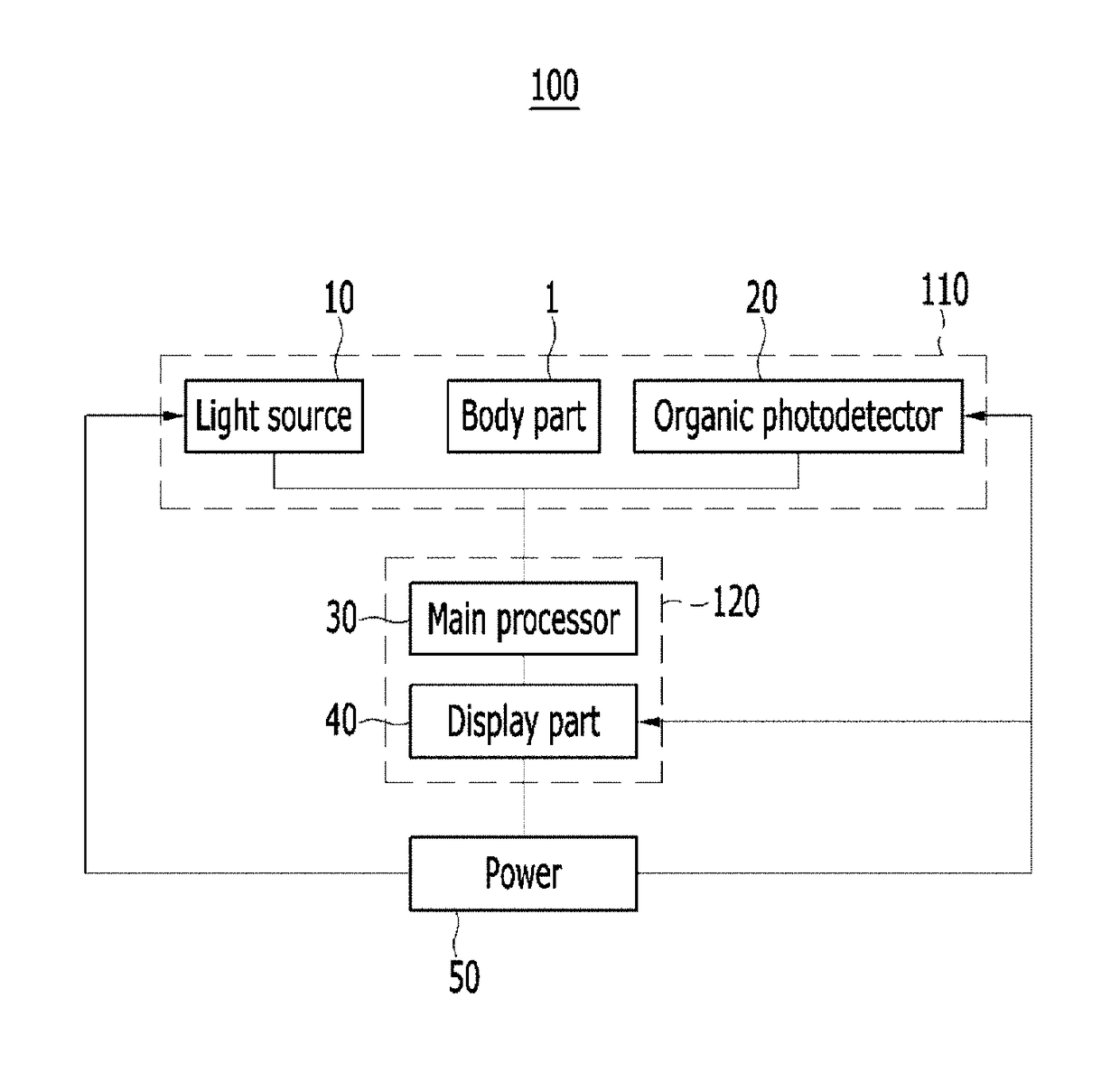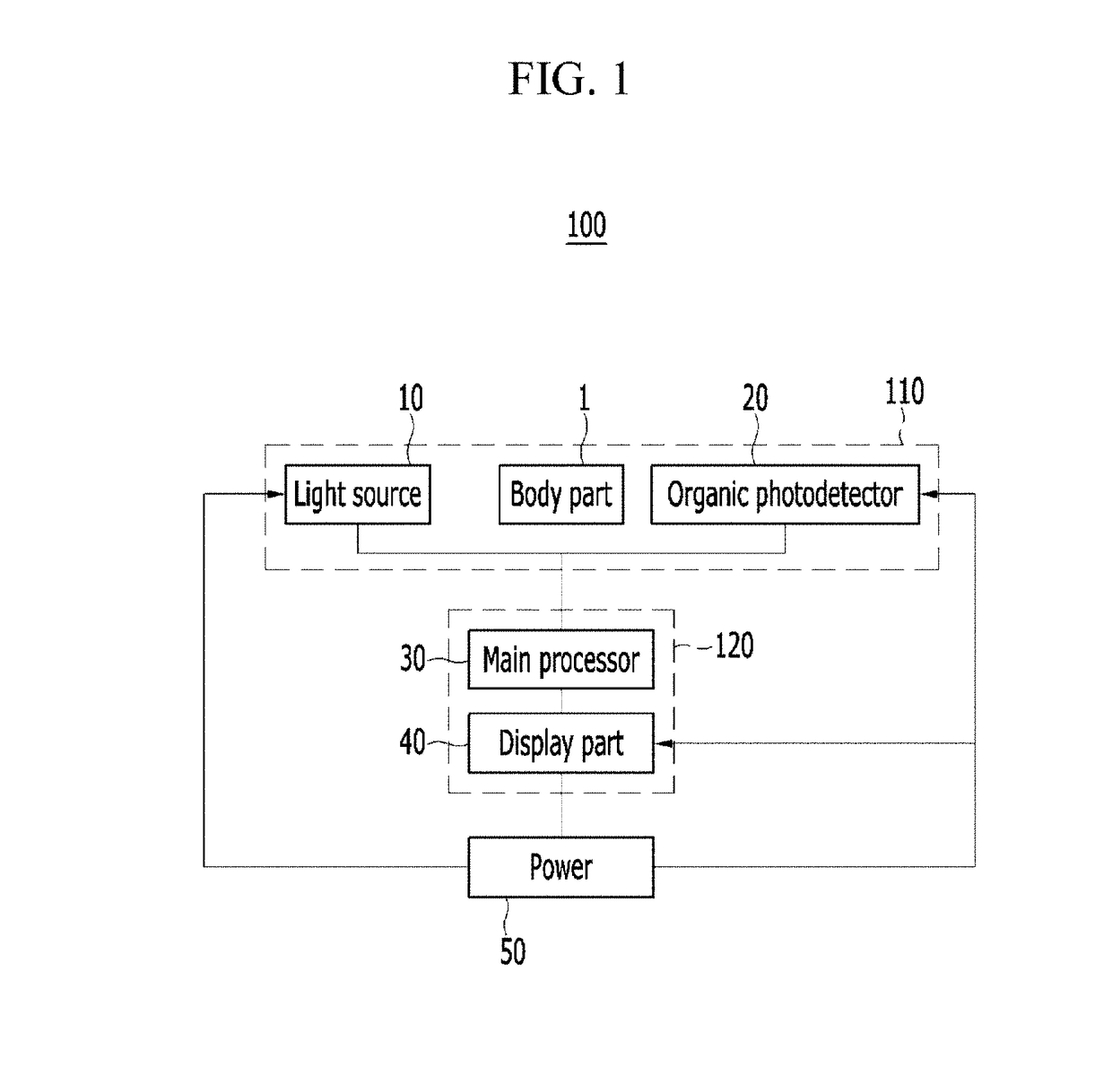Non-invasive biometric sensor based on organic photodetector
a biometric sensor and organic technology, applied in the field of non-invasive biometric sensors based on organic photodetectors, can solve the problems and difficulty in providing flexible (flexible, bendable, stretchable) shape, so as to reduce light loss and improve photoelectric conversion efficiency. , the effect of low photoelectric conversion efficiency
- Summary
- Abstract
- Description
- Claims
- Application Information
AI Technical Summary
Benefits of technology
Problems solved by technology
Method used
Image
Examples
Embodiment Construction
[0045]Example embodiments will hereinafter be described in detail, and may be easily performed by those who have common knowledge in the related art. However, inventive concepts may be embodied in many different forms and is not to be construed as limited to the example embodiments set forth herein.
[0046]In the drawings, the thickness of layers, films, panels, regions, etc., are exaggerated for clarity. Like reference numerals designate like elements throughout the specification. It will be understood that when an element such as a layer, film, region, or substrate is referred to as being “on” another element, it can be directly on the other element or intervening elements may also be present. In contrast, when an element is referred to as being “directly on” another element, there are no intervening elements present.
[0047]Hereinafter, a non-invasive blood glucose sensor according to some example embodiments is described with reference to the drawings.
[0048]FIG. 1 is a schematic vie...
PUM
 Login to View More
Login to View More Abstract
Description
Claims
Application Information
 Login to View More
Login to View More - R&D
- Intellectual Property
- Life Sciences
- Materials
- Tech Scout
- Unparalleled Data Quality
- Higher Quality Content
- 60% Fewer Hallucinations
Browse by: Latest US Patents, China's latest patents, Technical Efficacy Thesaurus, Application Domain, Technology Topic, Popular Technical Reports.
© 2025 PatSnap. All rights reserved.Legal|Privacy policy|Modern Slavery Act Transparency Statement|Sitemap|About US| Contact US: help@patsnap.com



